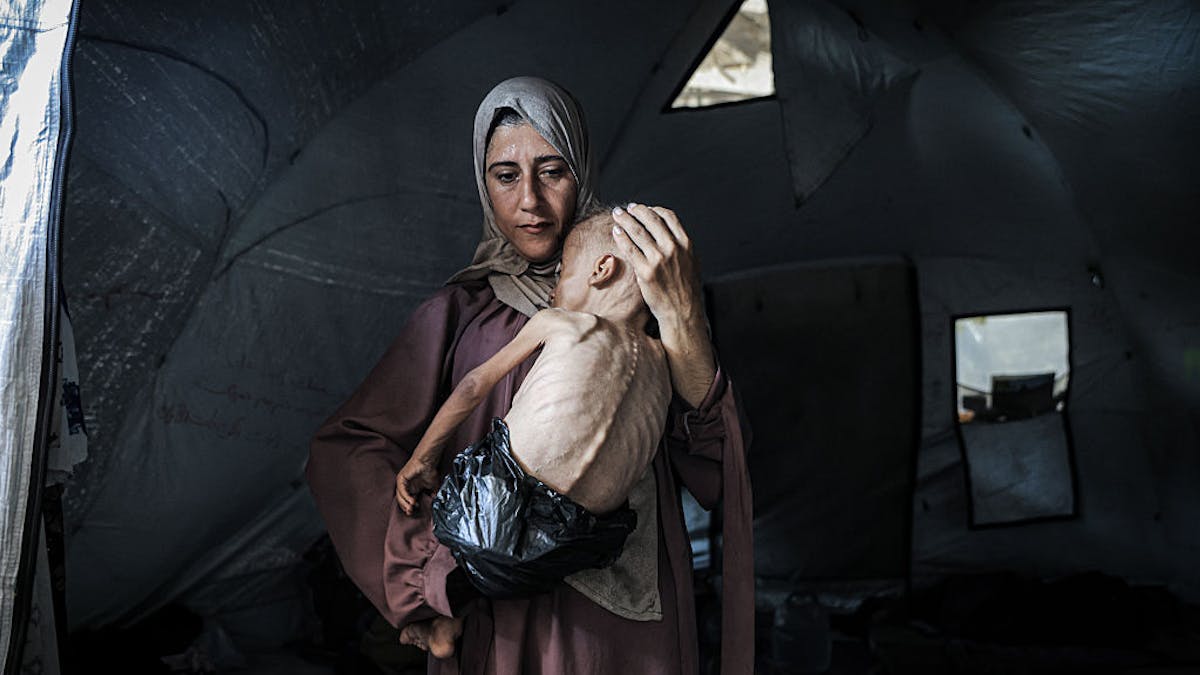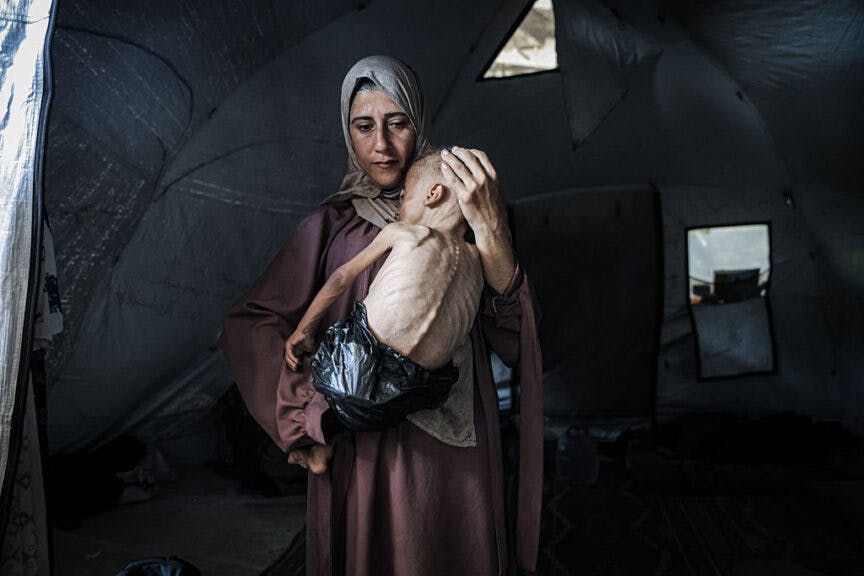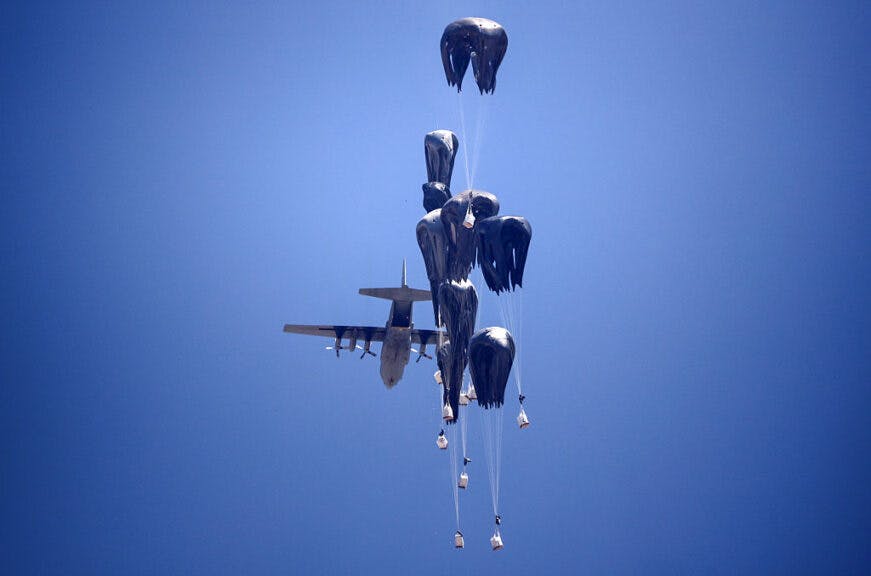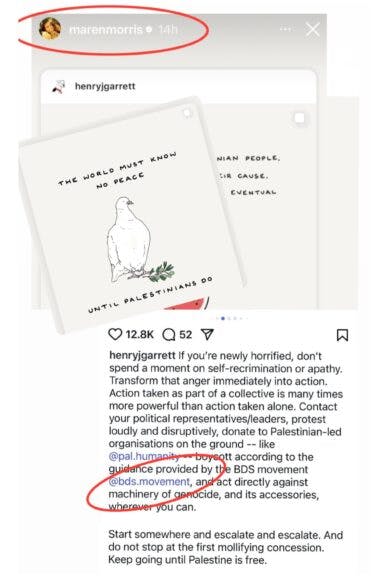


A picture is worth a thousand words — or in this case, a thousand lies. Or, in this case, a thousand reasons to fuel the BDS campaign in the United States: Boycott, Divestment, Sanctions.
As a professional photographer, I know that the person behind the lens doesn’t just capture the story, they control it. Every crop is a decision. Every object in the frame is a deliberate layer. Every angle sends a message. What you choose to show and what you intentionally leave out matters. Photography can illuminate truth. But it can just as easily be weaponized to obscure it.
That’s exactly what’s happening in Gaza.
A recent exposé by German outlet BILD revealed that Gaza-based photographer Anas Zayed Fatiyeh has been staging scenes of suffering — intentionally using women and children — to manufacture strong emotions and propaganda on behalf of Hamas. These aren’t candid moments of human agony; they are carefully choreographed images designed to deceive.
One of Fatiyeh’s photos recently went viral after being amplified by The New York Times and millions of influencers. It showed a severely malnourished Gazan child wearing a trash bag, with headlines claiming Israel was “starving” civilians. The image is heartbreaking, and the suffering is real — but the story was false. The child had severe congenital conditions, including cerebral palsy. A healthy child who appears to be a sibling, not in a trash bag but in normal clothing, standing right beside them, was deliberately cropped out of the frame.

Ahmed Jihad Ibrahim Al-arini/Anadolu via Getty Images
This wasn’t journalism. It was another example of deliberately distorting reality to cast Israel as the perpetrator and Hamas as the victim. It is visual DARVO: Deny, Attack, Reverse Victim and Offender.
And it didn’t happen in a vacuum. This isn’t organic outrage, it’s narrative warfare and has been going on for decades, executed in stages, and the formula works:
First, Hamas-approved photographers stage the shot. Then, mainstream outlets from The New York Times to the BBC buy and publish the images from the Hamas-approved photographer, giving them global legitimacy. BDS accounts flood social media with them, stripped of context but supercharged with moral outrage. By the time real developments emerge — like hostage videos showing real famine, or footage of Evyatar David, intentionally starved (a war crime) and forced to dig his own grave — the emotional groundwork is already in place. The narrative then takes root, outrage explodes, and blame shifts automatically to Israel. The cherry on top? Destabilization in the West.
That’s exactly what happened here. The manufactured image became the emotional climax of a months-long BDS campaign blitz accusing Israel of engineering famine while conveniently omitting a critical fact: it was the United Nations, not Israel, that paused aid deliveries, leaving nearly 1,000 humanitarian trucks stalled inside Gaza.
What didn’t go viral? Over 100 million meals have been delivered into Gaza in the last two months alone — facilitated by Israel and the U.S. through the Gaza Humanitarian Foundation. That’s not the behavior of a genocidal regime. That’s a sovereign nation defending itself under relentless rocket fire, still upholding humanitarian obligations in the middle of war.

Majdi Fathi/NurPhoto via Getty Images
Hamas understands something many in the West still don’t: visual storytelling wields more power than words. In a media landscape where lies spread six times faster than truth, where content goes viral without verification, and where movements are built on emotion instead of evidence, a single image — especially of a child in pain or, worse, a child’s death — can shape global perception before truth even enters the conversation. Even when the image is staged, or the child is tragically yet intentionally sacrificed by Hamas, the emotional impact overwhelms reality. And once the narrative takes hold, the truth rarely catches up.
This visual manipulation metastasizes. In the United States, Hamas’s propaganda becomes the lifeblood and oxygen of the Boycott, Divestment, and Sanctions (BDS) movement. While Hamas wages physical war, BDS attacks the American mind.
You’ve likely seen BDS content without realizing it: polished Instagram carousels calling for “genocide” strikes, petitions demanding economic boycotts, and blacklists of “Zionist businesses.” But make no mistake, this is not a grassroots cry for peace. BDS was conceived under the Iranian regime, shaped by Soviet propaganda, and codified at the 2001 Durban Conference — a supposed anti-racism summit that devolved into open antisemitism, casting Israel as the world’s pariah. Officially launched in 2005, BDS has since infiltrated nearly every legacy institution in the West and thrives on the most powerful algorithms and most naive influencers online.
BDS is a sophisticated, well-funded Trojan horse cloaked in Western progressive language: feminism, decolonization, intersectionality, liberation theology. These ideals have been hijacked and funneled into unlikely arenas. Wellness coaches are calling for BDS strikes. Interior design accounts are boycotting Jewish businesses. Predatory marketing influencers like Jenna Kutcher are raising money for NGOs that historically have documented ties to Hamas. The publishing industry is boycotting Jewish authors. And even ex-country music singer turned social justice crusader Maren Morris is resharing BDS propaganda on her Instagram stories. Many of these voices have unknowingly become messengers for Hamas.

Credit: @marenmorris/Instagram
I’ve seen their playbooks firsthand. Last year, I was part of the effort to stop a BDS resolution in Nashville and sifted through hundreds of BDS Google Drive toolkits used to orchestrate pressure campaigns. These documents detail everything from how to birddog politicians, chant slogans in English and Arabic, manipulate marginalized groups, and weaponize emotional language to win public opinion — along with legal contacts for when the chaos inevitably leads to arrests.
The manipulation works. We’ve created a culture where a staged photo can do more to radicalize a high school student at a private school that costs $30k/year than any speech from a terrorist leader. And the consequences are measurable: Antisemitism isn’t just rising, it’s raging. The Anti-Defamation League reports 46% of the global population harbors antisemitic beliefs. That means nearly every other person you pass on the street or follow online holds some form of hatred toward Jews or Israel.
Let’s stop pretending this is accidental. It is deliberate. It is dangerous. And it is working.
I believe in the power of photography. I’ve dedicated my life to it. When done with integrity, photography is one of the most powerful tools we have to build bridges, evoke empathy, and humanize differences. But when photography is used as a weapon of propaganda, it becomes a tool of destruction, of truth, of peace, and of human dignity.
This is a wake-up call — not just for journalists, producers, and editors, but for every one of us who consumes media. We must ask: Who is behind this image? What’s their agenda? What’s being shown and what’s being deliberately left out? Does this content amount to material support for a foreign terrorist organization — a felony under U.S. law? Where is the line, and who is drawing it?
If we don’t start applying discernment, we become complicit in a system designed to manipulate us. We become pawns in a game played by those who seek not peace, but power.
You can either be used by Hamas propaganda, or you can reject it. You can either fall for the illusion or you can insist on the truth, no matter how complex or uncomfortable.
Photography shapes memory. It shapes morality. And right now, it’s being used to distort both.
* * *
Alyssa Rosenheck is a bestselling author and named by Architectural Digest as one of the U.S.’s top photographers. Through her forthcoming book White. Blonde. Jew. (Spring 2026) and firsthand experience on post-war delegations to Israel, she confronts modern antisemitism while inspiring truth-tellers and cultural clarity.
The views expressed in this piece are those of the author and do not necessarily represent those of The Daily Wire.

Continue reading this exclusive article and join the conversation, plus watch free videos on DW+
Already a member?
